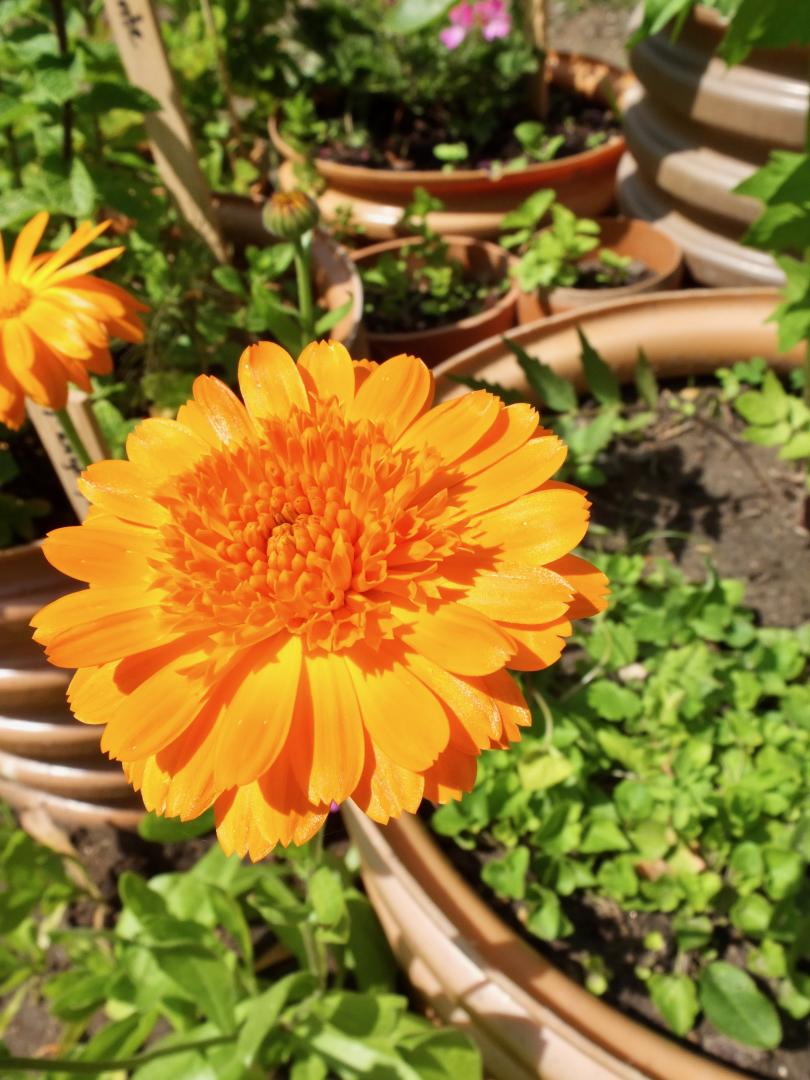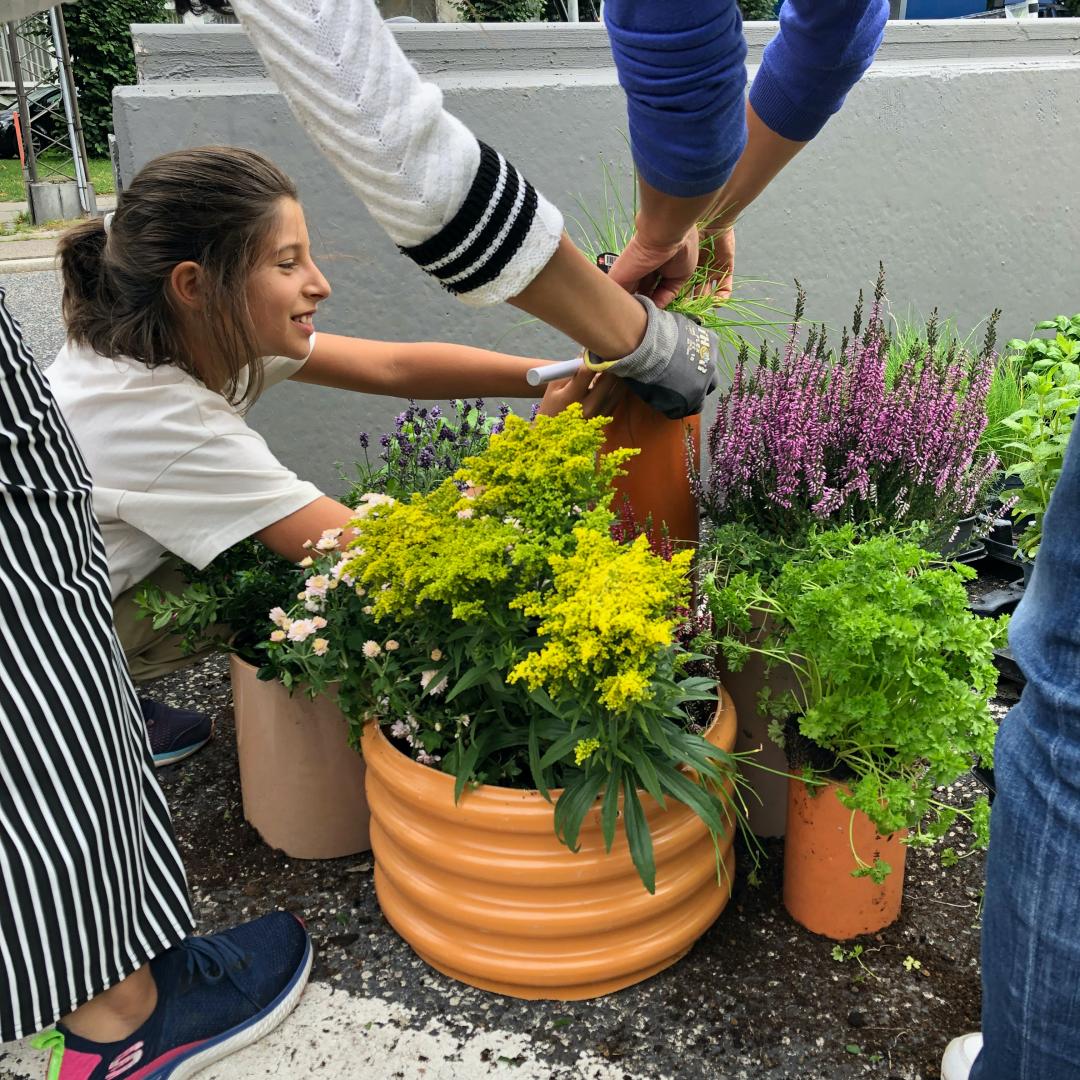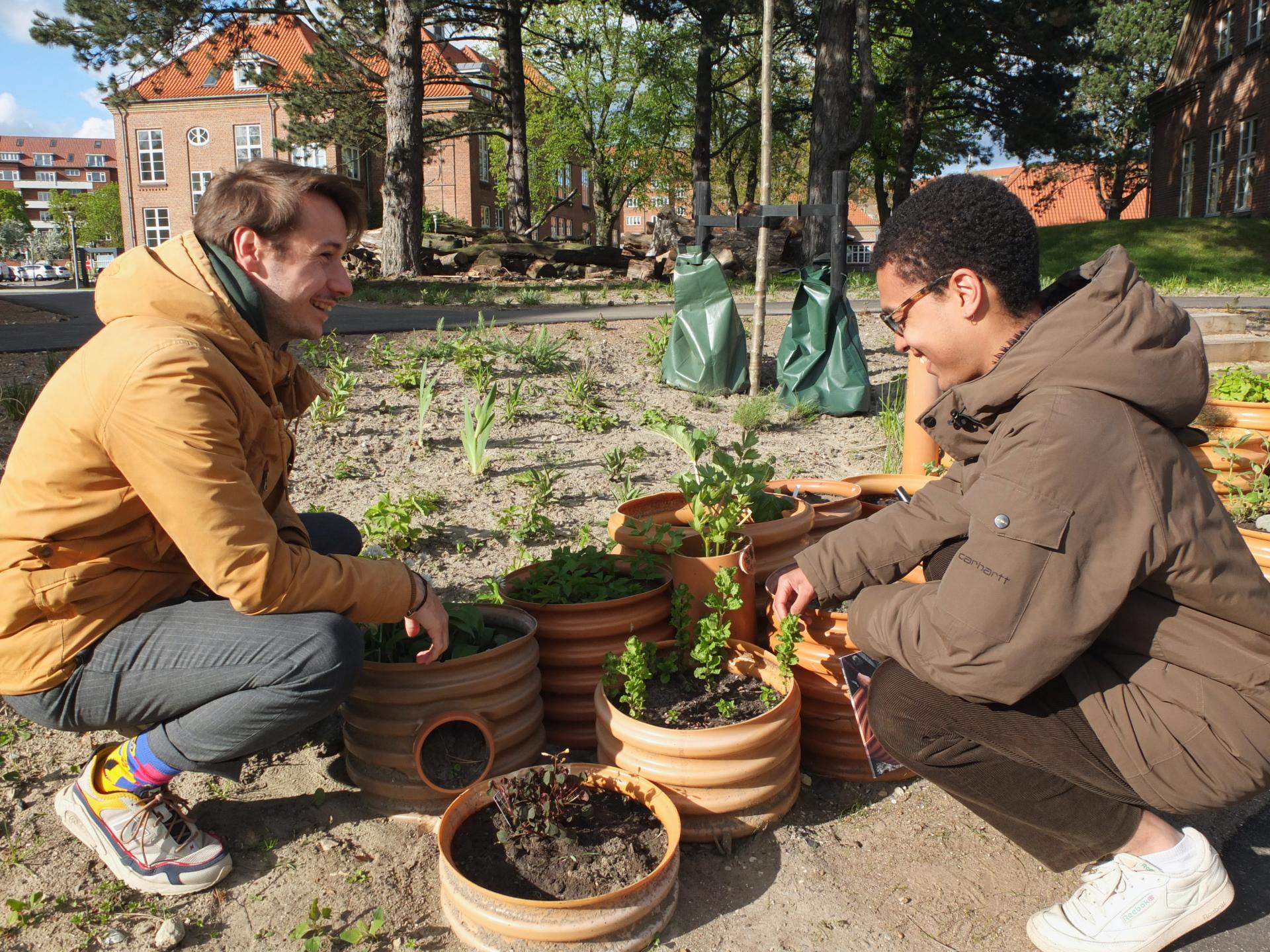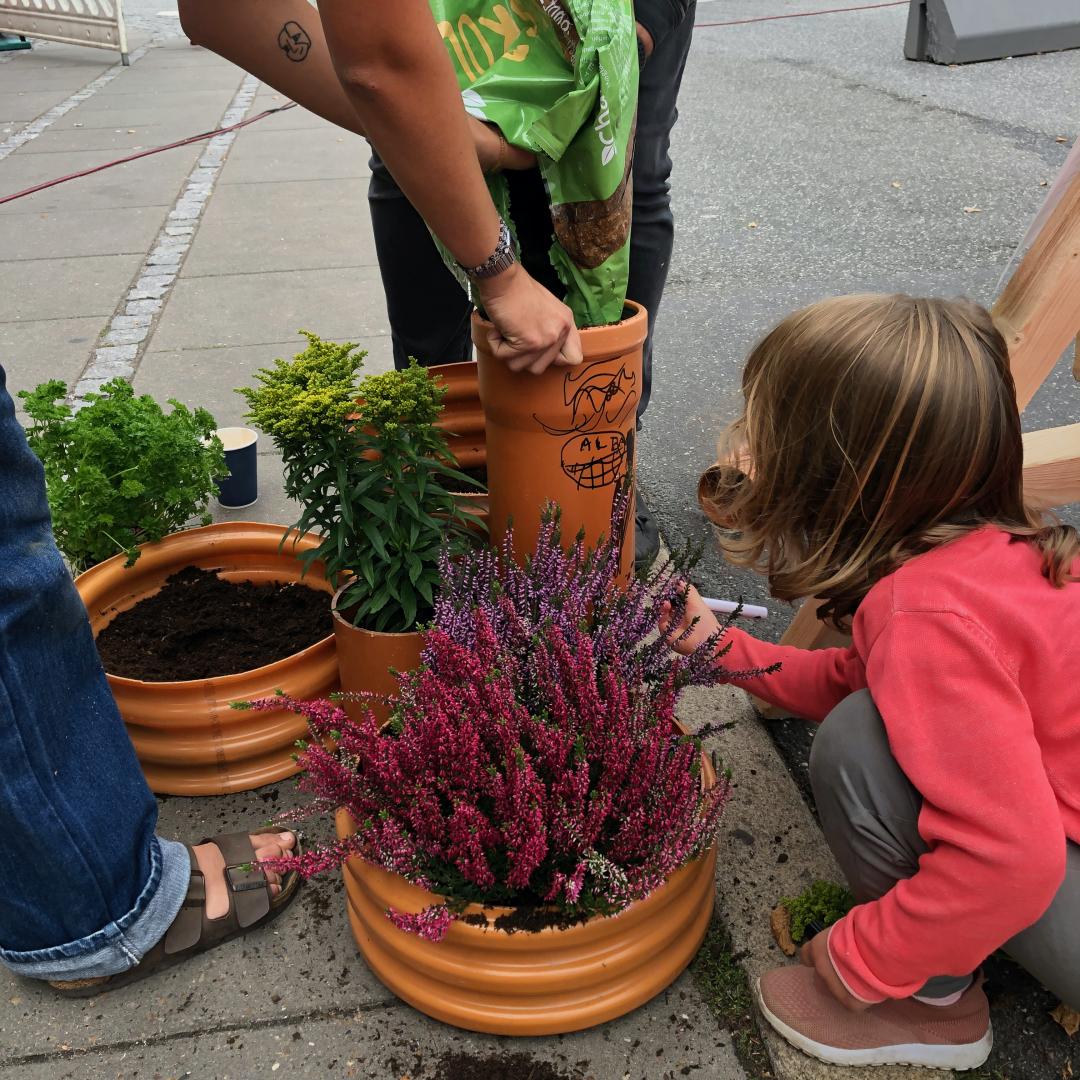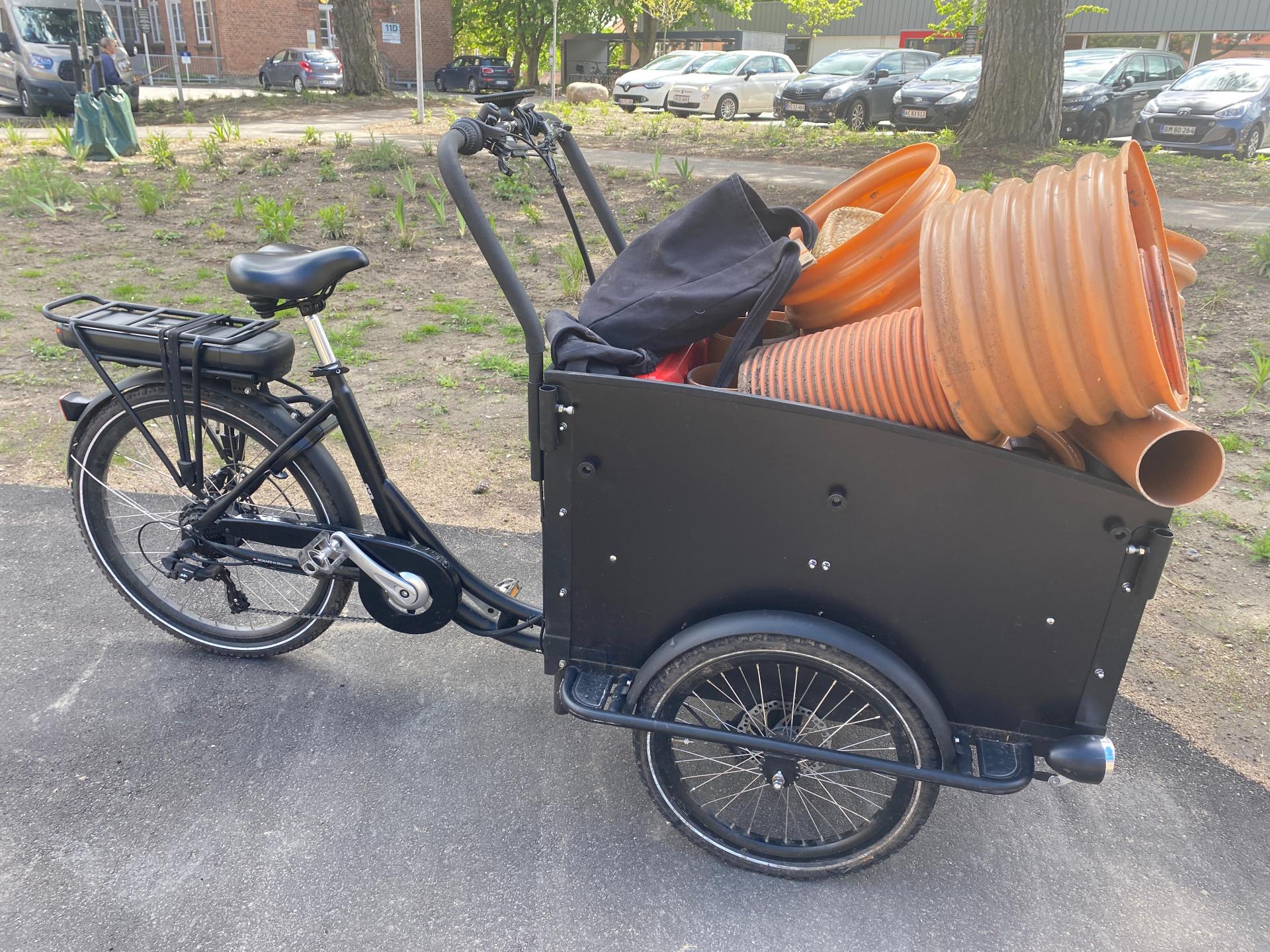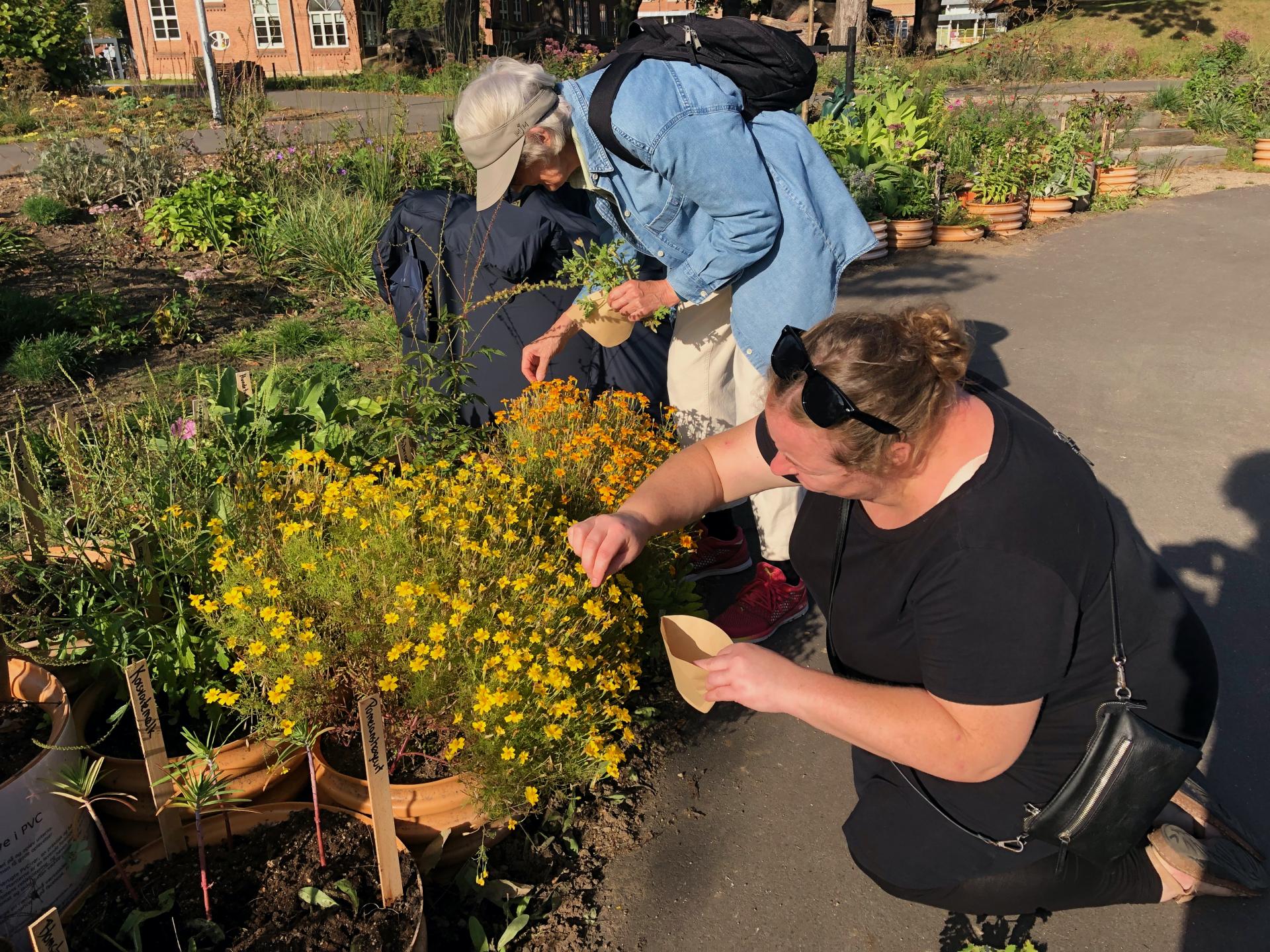Garden to connect
Basic information
Project Title
Full project title
Category
Project Description
A tiny herb garden in a public park. A place to connect: To our senses, to nature and to neighbours. Glimpses of beauty in pipes raised from the ground, easily accessible, also when seated in a wheelchair or a stroller.
The herbs stimulate all senses, which connects us to our body and stimulate our awareness of the urban nature, where we live.
The plants hold past and future: Stories of medical use from ancient time and the joy of harvesting seeds to repeat. Circle of life in reused pipes.
Geographical Scope
Project Region
Urban or rural issues
Physical or other transformations
EU Programme or fund
Which funds
Description of the project
Summary
A tiny herb garden, established in recycled pvc-pipes in a public park. The park co-serves as outdoor room for rehabilitation, where a great variety of citizens with need of rehabilitating activities come for treatment.
The herb garden aims at inviting visitors to pause and sense, to take a moment to explore and experience.
Citizens, neighbors and professionels alike have been invited to participate in caring for the plants.
Establishing such an oasis of living magic in bits of building waste - raised pvc pipes - clearly demonstrates, that urban nature is available for everyone and beneficial for us all.
Key objectives for sustainability
Using reused pvc pipes as plant containers is excellent upcycling of a material easily available in any urban setting, where construction is carried out. That means anywhere.
The material is brilliant to establish urban gardens - tiny or mighty - since it is free, safe and easy to handle.
The pipes are like building bricks, giving the wanna-be gardeners a way to design their own unique urban garden. It adds a playfullness and (permanent) temporality to gardening, which is highly in demand, when developing urban spaces. Since it is easily available and simple to change, citizens can test and try out, change and develop, just like urban spaces and modern lifes constantly change.
All pipes and plants are brought in by cargo bike. Children and elderly people can handle them, with no fear of accidents.
Key objectives for aesthetics and quality
PVC pipes are not necessarily perceived as beautiful. The plants and ownership make them beautiful.
The orange color is very urban-industrial. When exposed to sun, they fade, and look more like terracotta - yet without being ridiculously expensive, heavy and sensitive to frost.
The beauty and quality of experience lies mainly in the herbs. The raised pipes make the plants easily available and invites visitors to come closer, look closer, feel the twigs, sniff the flowers, taste the leaves.
One plant, placed in one pipe, with a clearly name tag, reduce the 'fear of unknown green stuff' that characterice many modern citizens in cities.
Exemplarity:
- Left-over construction bits of pvc pipes are available anywhere in urban settings. It's free, safe and easy to handle.
- Herbs provide stimuli for all senses and are - not least - a conversation starter, also among formerly-strangers. They connect us to the past and give promise of future. They provide seeds and cuttings, which can generously be shared, to empower anyone to grow their own and thereby grow connected to urban nature and neighbours in the cities where we live.
Key objectives for inclusion
Herbs in raised pipes are easily available for children in strollers and adults in wheelchairs alike.
The generally 'tamed' nature reduce fear of unknown for people raised off the ground, with no former contact with soil and plants.
Containers are for free. Soil very cheap. Plants and seeds shared for free.
Placed in a public park, shaped for outdoor rehabilitation, accessability is super.
The park and herb garden is open 24/7/365 and any visitor is welcome to look, touch, smell, taste. Citizens and professionals have been invited to join the work and exploration of the herb garden. It has been promoted in fotos, text and spoken word (podcast).
Citizens and visitors from other cultures, speaking other languages, recognize and reconnect via the herbs.
Exemplarity:
- Can be established anywhere with very little effort and investment. Can be moved and developed in an ongoing process by any participant. This gives a high degree of ownership. When citizens participate in establishing garden-pipes, we all write our names on the pipes, a simple yet solid marker of belonging.
Results in relation to category
People in need of rehabilitation have often suffered traumas and/or live their lives with handicap. Access to connect to urban nature is extra dire, when wild nature is less accessible.
Anyone living in a city - meaning the vast majority of europeans - have very limited access to nature, green spaces, plants. Empowering us all to be able to grow our own herbs, flowers, green stuff - together - is a force that feed hope, a sense of belonging to the place where we live.
Placing the abstract 'nature' in the city, in a shape and size we can overcome, opens our eyes and minds to the magic of living nature, and hence a path and reason to protect it.
We have had many magic moments with people of all ages, nationalities, capabilities (physical, mental, social) in the garden - and plenty of photos showing the engagement.
How Citizens benefit
Citizens where invited in establishing, growing and harvesting. Their different perspectives and interests made the garden design more diverse. Their bringing cuttings and seeds home and to other gardens, strengthened and enlarged the scope of the project: More sense-stimulating and urban nature, reasons and places to build communities. And strong stories, carried and spread by individuals and groups, about empowering and connecting.
A core value is the simplicity, which any visitor has understood in a glimpse of an eye. Next, each and every visitor has applied something personal and unique to a plant, adding a story, a memory, a question, a request - and generously shared with any other visitor present at the same time.
Involvement has nourished diversity, togetherness and inclusion.
Physical or other transformations
Innovative character
Establishing a garden is most commonly a lasting structure, hence demanding longterm planning and continuity.
A garden in reused plastic pipes is flexible and moveable, hence making gardens accessable under conditions with permanent temporality. E.g. in city areas, where construction is going on. For people living somewhere non-permanent, be it refugees, students abroad, workers away from home, children in care homes, ...
The move-ability opens for testing out, trying out and flexible, continued reconstruction and development.
City-gardens tend to be expensive and resource consuming, e.g. plantcontainers of steel, concrete, terracotta. Reused building waste is for free, it saves money, material and CO2 to reuse it in the cities, where it is produced.
This type of urban nature demands no big plan, investment, administration: It is easily unfold in a local setting, adjusted to local needs, wishes and conditions.
Learning transferred to other parties
Any city dwelling, tiny or mighty. Any kindergarden, school, nursing home, collegium, apartment construction in any city. Plenty and plenty of city-citizens, who have little or no experience with sticking their fingers in soil, feeling, hearing, touching, smelling, tasting a growing herb, might gain the opportunity to do so, and thereby connect their own body to urban nature, the place they live and some of the people they share this space with.
The project is very simple to convey - simply sharing our photos via social media will do much.
Furthermore, in different cultural settings, a large number of different organizations might adopt and support: Churches, scouts, plant-enthusiastic fora, social housing, entrepreneurs (providing the pipes) etc. A person or organisation to initiate an activity is always an important key to support positive development, and make roots catch foothold.
The plastic industry in Europe might even be willing to support.

